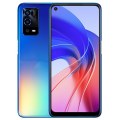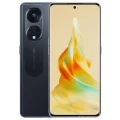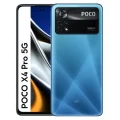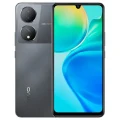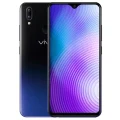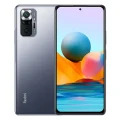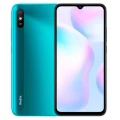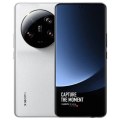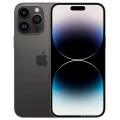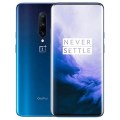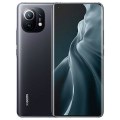Oppo A1
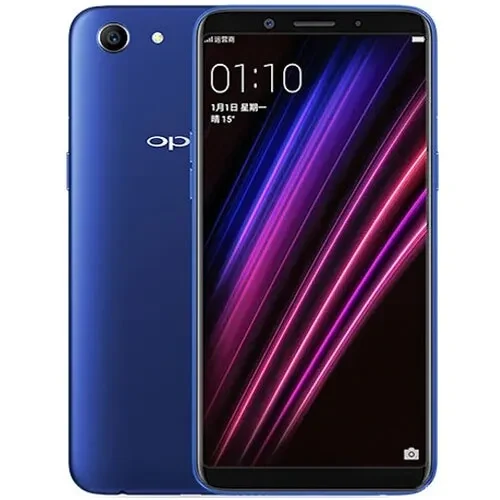


Oppo A1 Price in Bangladesh
The Oppo A1 is priced at 20,990 BDT in Bangladesh. This budget-friendly smartphone offers a 5.7-inch S-IPS LCD display for vibrant visuals. It features a 13MP rear camera and an 8MP front camera for clear photos and selfies. Powered by a 2.5 GHz octa-core processor, the Oppo A1 ensures reliable performance for everyday use. Available in Deep Sea Blue, Cherry Red, and Pearl White, it offers a sleek design and solid functionality at an affordable price.
Specifications
General
| Model | Oppo A1 |
| Status | Available |
| Official price | 20990 |
Design
| Colors |
Blue, Red, White |
Network
| Technology | GSM / HSPA / LTE |
| 2G Network |
GSM 850 / 900 / 1800 / 1900 - SIM 1 & SIM 2 |
| 3G Network |
HSDPA 850 / 900 / 1900 / 2100 |
| 4G Network |
LTE |
| GPRS <strong>GPRS</strong> (General Packet Radio Service) is a packet oriented mobile data service on the 2G and 3G cellular communication system's global system for mobile communications (GSM), Generally, GPRS is used for the purpose of wireless data transfer, such as sharing pictures and videos or browsing the Internet via a mobile phone connection. | |
| EDGE <strong>EDGE</strong> (Enhanced Data GSM Environment) is a wireless network technology generally considered the next step in the 2G network offers data transfer rates up to four times faster than ordinary GSM networks, Generally, EDGE is used for the purpose of wireless data transfer, such as sharing pictures and videos or browsing the Internet via a mobile phone connection. | |
| Speed | HSPA 42.2/5.76 Mbps, LTE |
Display
| Display Type <strong>Display Technology => </strong> A number of display technologies and types used in mobile phones => TFT (Thin Film Transistor), IPS (In-Place Switching), OLED (Organic Light Emitting Diode), AMOLED (Active-Matrix Organic Light-Emitting Diode), Super AMOLED (an even advanced version of AMOLED), Resistive Touchscreen (Resistive touchscreens contain two layer of conductive material with a very small gap between them which acts as a resistance), Capacitive Touchsceen (Capacitive touchscreen technology consists of a layer of glass coated with a transparent conductor) | S-IPS LCD capacitive touchscreen, 16M colors |
| Size | 5.7 inches, 83.8 cm2 |
| Resolution | 720 x 1440 pixels, 18:9 ratio (~282 ppi density) |
| Features |
MP4/H.264/FLAC player - MP3/eAAC+/WAV player - Document viewer - Photo viewer/editor |
Camera
Main camera
| Camera Setup | Single |
| Primary <strong>Camera</strong> is able to capture photographs and usually videos, The most important characteristics of a camera are the resolution (measured in megapixels), lens focus type (fixed or automatic), higher megapixel cameras are known to capture higher quality photos, but not always a good measurement of the photos quality. |
13 MP, f/2.2, 1/3&quot;, 1.12µm, PDAF |
| Features |
LED flash, HDR, panorama |
| Video | 1080p@30fps |
Selfie camera
| Camera Setup | Single |
| Primary <strong>Camera</strong> is able to capture photographs and usually videos, The most important characteristics of a camera are the resolution (measured in megapixels), lens focus type (fixed or automatic), higher megapixel cameras are known to capture higher quality photos, but not always a good measurement of the photos quality. |
8 MP |
Hardware
| RAM (Memory) <strong>RAM</strong> (Random Access Memory) is a type of computer memory that can be accessed randomly, any byte of memory can be accessed without touching the preceding bytes that allows information to be stored and accessed quickly from random locations. RAM is the most common type of memory found in computer systems, smartphones, tablets and other electronic devices. | 4 GB |
| Internal Storage <strong>Internal Storage</strong> is a data storage space (flash memory) mostly used in smartphones, tablets and other electronic devices where operating system, apps, music, photos, videos, files and other user data Is stored. | 64 GB |
| Sensors <strong>Sensors</strong> are electronic components that detects and responds to some type of input from the physical environment. The specific input could be light, heat, motion, moisture, pressure and location, The output is generally a signal that is converted to use in computing systems, a location sensor, such as a GPS receiver is able to detect current location of your electronic device. |
Accelerometer, proximity |
Connectivity
| Bluetooth <strong>Bluetooth</strong> is a wireless communications technology for exchanging data between mobile phones, headsets, computers and other network devices over short distances without wires, Bluetooth technology was primarily designed to support simple wireless networking of personal consumer devices. | 4.2, A2DP, LE |
| Infrared <strong>Infrared</strong> connectivity is an old wireless technology used to connect two electronic devices. It uses a beam of infrared light to transmit information and so requires direct line of sight and operates only at close range. | |
| USB | microUSB 2.0 |
| GPS <strong>GPS</strong> The Global Positioning System is a satellite-based radio navigation system, GPS permits users to determine their position, velocity and the time 24 hours a day, in all weather, anywhere in the world, In order to locate your position, your device or GPS receiver must have a clear view of the sky. | Yes, with A-GPS |
| NFC <strong>NFC</strong> (Near field communication) is a set of standards for smartphones and similar devices to establish peer-to-peer radio communications with each other by touching them together or bringing them into proximity, usually no more than a few inches. |
Battery
| Battery Type <strong>Battery Type => </strong> Cell phones run on various kinds of batteries depending on the manufacturer, phone size or shape and features. There are basically four types of cell phone batteries => Lithium Polymer, Lithium Ion, Nickel Metal Hydride and Nickel Cadmium. | Non-Removable Li-Po |
| Capacity <strong>Battery Capacity</strong> is a measure (typically in Amp-hr) of the charge stored by the battery, and is determined by the mass of active material contained in the battery. The battery capacity represents the maximum amount of energy that can be extracted from the battery under certain conditions. | 3180 mAh battery |
Oppo A1 Review: A Budget-Friendly Contender with Surprising Features
A Solid Introduction to the Oppo A1
The Oppo A1 is here, and it’s making waves among budget-friendly smartphones. Packed with impressive features, it’s catching the attention of tech enthusiasts and budget-conscious customers alike. With a sleek design, reliable performance, and competitive pricing, the Oppo A1 aims to strike the perfect balance between affordability and innovation.
But how does it stack up against the competition? And, more importantly, is it worth your hard-earned money? This in-depth review will cover the Oppo A1’s design, display, camera capabilities, performance, and pricing to help you decide if it’s the smartphone for you.
The Oppo A1 vs. its Rivals
Before we jump into the specifics, it’s worth placing the Oppo A1 into context. At its price point, the Oppo A1 competes with smartphones like the Redmi Note series, Realme Narzo models, and Samsung Galaxy A-series devices. Each of these competitors offers a unique mix of features, so any new entrant needs to bring something extra to stand out. Oppo wisely focuses on delivering a well-rounded package with particular attention to design and user experience.
While some rivals emphasize raw processing power or ultra-high-resolution cameras, the Oppo A1 focuses on refinement, accessibility, and an overall seamless experience—a strategy that makes it an appealing choice for many users looking for balance over pure specs.
Design and Build Quality
One of the standout features of the Oppo A1 is its design. With a slim profile and a weight of just under 190g, the phone feels incredibly comfortable to hold. The plastic back panel, delivered in two vibrant finishes—Pearl White and Midnight Black—adds a touch of elegance while remaining scratch-resistant.
The rear camera module fits flush against the body, making the design sleek and modern. The device also features a side-mounted fingerprint scanner that doubles as the power button, a practical and responsive solution.
Though the materials reflect its budget range, Oppo’s focus on ergonomics and aesthetics ensures the A1 doesn’t feel cheap. It’s a phone designed to look good and last.
Display That Holds Its Own
On the front, you’re greeted by a 6.56-inch HD+ IPS LCD screen with a refresh rate of 90Hz. While it doesn’t reach Full HD resolution like some higher-tier competitors, the A1 strikes a good balance for its price. Colors are vibrant, and brightness levels are sufficient for outdoor readability.
The 90Hz refresh rate, in particular, stands out. Whether you’re scrolling through social media, playing games, or swiping between apps, the buttery smooth navigation makes every interaction feel faster and more fluid.
However, the bezel-to-screen ratio could have been tighter for a slightly more premium appearance.
Capturing Moments with the Oppo A1 Camera
Oppo values camera performance, and the A1 doesn’t disappoint for its price. Equipped with a dual-camera setup, the A1 features a 50MP primary sensor alongside a 2MP depth sensor.
The Pros:
- Daylight photography: The 50MP primary sensor delivers crisp and vibrant photos with excellent detail, especially in brightly lit environments. Colors are well-balanced, and dynamic range is notably good for this category.
- Portrait mode: Thanks to the depth sensor, portrait shots are clean with sufficient background separation and natural blur.
The Cons:
- Low-light struggles: While it manages reasonably well in dimly lit settings, the absence of optical image stabilization (OIS) means photos can become grainy in challenging lighting conditions.
- Limited versatility: Without an ultra-wide or macro lens, the camera system feels basic compared to rivals offering more versatile setups.
The 8MP front-facing camera is functional, delivering decent selfies that cater well to casual photographers or social media users.
Performance That Gets the Job Done
Under the hood, the Oppo A1 runs on a MediaTek Dimensity 6020 chipset paired with either 6GB or 8GB RAM options. This configuration ensures solid performance for everyday tasks like web browsing, streaming, and light gaming.
For casual gamers, the A1 holds up well with popular titles like PUBG Mobile or Call of Duty Mobile running smoothly on medium settings. While it’s not designed for intensive gaming with maxed-out graphics, it’s more than capable for the average user.
The device comes with ColorOS 13.1 based on Android 13, which features a user-friendly interface, plenty of customization options, and smooth animations.
Battery Life That Keeps You Going
Another highlight of the Oppo A1 is its battery performance. With a 5,000mAh battery capacity, the phone easily lasts an entire day of moderate to heavy use, including video streaming, casual gaming, and social media surfing.
Charging is handled via SuperVOOC 33W fast charging, which can take the battery from 0% to 50% in around 30 minutes. While a full charge takes roughly 70 minutes, this is competitive within its price range.
How Oppo A1 Feels in Everyday Use
Performance specs only tell part of the story. Testing the Oppo A1 in real-life scenarios reveals its strengths and a few minor limitations.
- Pros: The phone felt speedy and responsive in daily tasks, with multitasking proving incredibly smooth, especially with the 90Hz refresh rate.
- User Interface: ColorOS delivers a polished software experience reminiscent of flagship devices.
- Cons: Heavy gamers may experience occasional frame rate drops in graphics-intensive games, but this isn’t uncommon for budget devices.
Price Analysis and Value for Money
The Oppo A1 retails at around $200, making it an attractive option for budget-conscious shoppers.
For its price, the Oppo A1 offers excellent value with features like a 90Hz display, reliable battery life, decent performance, and a stylish design. It undoubtedly punches above its weight in several aspects compared to other devices in the budget segment.
Competitors like the Redmi Note 12 and Realme Narzo 60x may tempt users with higher resolution displays or extra camera lenses, but few match the A1’s overall balance. This makes it especially appealing to users looking for a dependable, distraction-free device.
Who Is the Oppo A1 Best For?
The Oppo A1 is a great fit for:
- Budget-conscious buyers who want a solid all-rounder.
- Casual users needing a phone for social media, streaming, and light gaming.
- Anyone valuing design and user experience over raw specs.
It may not be ideal for those looking for flagship-level camera performance or hardcore gamers, but for its price, Oppo delivers a device that feels much more expensive than it is.
Should You Buy the Oppo A1?
If you value a polished smartphone experience on a budget, the Oppo A1 is hard to beat. It holds its own in design, display quality, and daily usability, making it a worthy choice for anyone shopping in the sub-$250 price range.
Want to get more insights and latest updates on Oppo A1 and other smartphones? Stick around for more reviews and guides!
